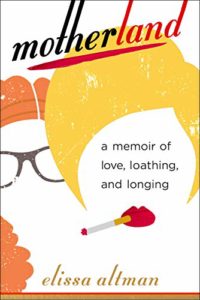When Susan commented on my heretofore undiscovered shoe problem, it was with a combination of bemusement and concern: she wanted to know if there was anything else in my life that I liked to collect. The answer was yes, and she girded her loins: “I have a deep, unabashed crush on used cookware,” I told her. “The older the better.”
She smiled, and I took it as a good sign.
I had my first encounter with used cookware when I was living in an old, rambling apartment on Ocean Parkway in Brooklyn, back in the early 1990s. My grandparents, father, and aunt had been its first tenants in 1934, and the apartment door still bore the original nameplate: “H. Altman.” After my grandmother died, my father and aunt continued to maintain the apartment; my father paid the $142 monthly rent, and when I went through a rotten break-up, I moved in with my two cats and spent the first six months staring, gape-mouthed at my grandmother’s ornately framed copy of
Bruegel’s The Harvesters that hung above her sofa, its tired, codpieced peasants bloated and misshapen by the warping of the poster-board after sixty years spent hanging so close to Coney Island.
For a while, I lived in a sort of emotional torpor tempered only by finding things like my grandmother’s makeup still in the medicine cabinet, or her groceries, purchased the day before she died, still sitting in her fridge. But eventually, I set to work every night, sifting through more than half a century of papers, photos, and letters that documented one family’s bi-continental existence before and during the war, and its future afterwards, when the relatives in the old country were no longer a part of it.
One night, I found myself in the kitchen, face to face with a wall of drawers that hadn’t been opened in years. I’d spent every Saturday afternoon of my childhood staring at them, wondering what was inside, and now, the only thing that would stop me from finding out were ghosts. So, I pulled open the widest one, and out popped a sheaf of recipes written in Yiddish. Buried beneath them lay a cleaver so enormous and heavy that I couldn’t fathom what it was used for. I touched the blade, which was now as dull as an ancient bench scraper that had been used on concrete.
“It’s your great-grandmother’s hochmesser,” my father said, after I told him what I’d found. “She brought it over with her.”
Brought it over? That’s what she chose to carry?
If she was flying, it’d have put her over the weight limit.
I felt somewhat like a thief when I considered taking it out to be professionally sharpened. I worried about having greasy hands one day and accidentally dropping it either on or near one of the cats, or on my foot. The possibilities were endless. But beyond that, I never felt like I had the right to just take it. So, I put it back in the drawer and I can only guess that when I moved out, eighteen months later, it was either co-opted by another family member, or thrown out when the apartment was released to the landlord, who then sold the building. I’ll somehow always regret not liberating it, even though it weighed about 8 pounds, and I’d rarely if ever use it.
But at that point, I was a convert. With every piece of ancient cookware comes a story, and the kitchen ghosts that go with it come to life again. If you use your grandmother’s hochmesser, or her wok, or her trussing needle, or her chicken fryer, you’re also surely standing in her bump-toe, lace-up shoes, in her kitchen, either here or in another country at another time. And if you happen to just buy your cookware used–as I often do–you’re paying respect to somebody else’s grandmother’s hochmesser that maybe went forgotten years ago, disappearing amidst the foamers and electric egg poachers and automatic yogurt makers and teflon-coated hamburger presses of today’s kitchen.
My kitchen, I’m told, sometimes resembles an antique shop, but I use absolutely everything that’s buried in it and hanging from it.
Clockwise from bottom: slider flipper, herb masher, flexible spatula, the nutmeg
grater that ate Cleveland.
A short list:
Sue’s Aunt Ethel’s set of nesting Griswold cast iron pans from the 1930s, which she probably received as a wedding present;
A hand chopper from the 1940s, meant for herbs;
An ancient nutmeg grater-shaped gigantic potato grater bought by Sue’s mom at a tag sale for a nickel, and which we use every year for latkes;
A 30 pound, round John Boos Asian-style chopping block procured from eBay (and also the real thing–a Chinese ironwood board bought in San Francisco), which is lovely;
A 1910 Knobloch pyramid toaster bought on eBay, which works better than our $300 Dualit;
A carbon steel butcher’s knife bought for 5 cents at a used furniture store in Brandon, Vermont;
A 1930s Griswold cast iron griddle bought at the same place, for $15;
A jumble of odd-shaped cast iron pans–square, round, deep, shallow–bought in Leicester, Vermont, for no more than $40 total;
An ancient Chinoise marked “Dehillerin” and bought at a rummage sale in Litchfield, Connecticut for $15;
A tiny spatula celebrating the opening of a McDonalds in 1977 at Caldor Plaza in Bristol, Connecticut, from Sue’s mother, and perfect for flipping sliders;
The sine qua non of flexible spatulas from the 1950s, also from Sue’s mother, and which we use constantly;
A 1940s flame tamer/burner-top toaster, obtained for free, at a flea market in Harwinton, Connecticut.

A score: Chinoise from Dehillerin

C. 1910 Knoblock Toaster
Twice or three times a year, I come home to catalogs from Williams-Sonoma, and Sur La Table, and every year I pour through them and shake my head. Who needs a foamer? Why do I need new cast iron when the older stuff is better than the newer version of the former? Do I need an electric egg boiler, or one that automatically pricks a hole in the bottom of the shell so that the egg doesn’t explode? I’m not sure what all of this stuff says about us food people, as consumerists.
A few years before I moved to Brooklyn, I went on a French copper binge, utilizing my 20% discount at Dean & Deluca to stock my shelves. Those expensive pots are now down in the basement, old and sauce-worn. I’d like to have them re-tinned, eventually, in the same way that I’d like to be able to wear my brown suede Manolo boots again. Eventually. In the meantime, I’ve held off on buying expensive cookware, forsaking it for the stuff that is more loved, and used, and storied, like my great-grandmother’s long-lost hochmesser.







